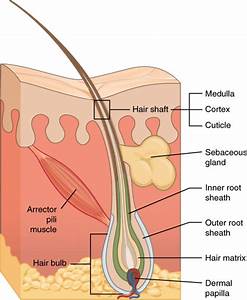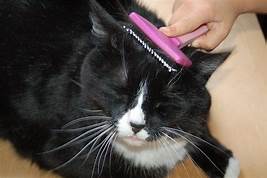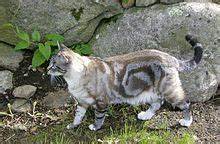As with humans, the skin is the largest organ on your cat’s body. It is the job of the skin on a cat to provide a protective barrier against weather, to regulate its temperature, and to give the cat its sense of touch.
The skin can be 12 to 24% of the animal’s body weight, depending on the cat’s species and age. A cat’s skin has three layers. The outer layer is called the epidermis, and the middle layer is the dermis. The innermost layer is called the subcutis.
Other important parts of the skin include such appendages as hair and claws, and the cat’s subcutaneous muscles and fat.
This skin is covered with a fur coat, often the most beautiful part of the animal. The coat, as well as the skin, is designed to help protect the cat from injuries, heat, cold, wind and rain.
Often, if you look at your kitty’s coat, it will give you a general idea of the cat’s health. If the cat looks good, that’s a good general guide to his overall health.
Here’s an incredible fact: A cat’s fur can contain up to 130,000 hairs per square inch, or 200 hairs per square millimeter. Except for a few breeds, such as the Rexes, the coat is made up of three different kinds of fur. The coarse outer layer is known as the guard or primary hairs.
These guard hairs are nearly twice as numerous on the back and sides than they are on the chest and abdomen. These hairs are rooted in individual follicles, or pits in the skin. They are connected to the nervous system.
Thus, the hairs can respond to anger, fear, and cold. They respond to a cat’s excitement when he gives chase during the hunt. By standing upright, they give the cat a more aggressive appearance. Because they respond to air flow, they are also part of the cat’s sensory system.
Along with the guard hairs are found the more bristly awn hairs. (This is the name given to the part of the cat’s coat that is longer than the undercoat but shorter than guard hairs.) These hairs have thickened tips. The awn hairs grow from the follicles in clusters.
Below these hairs is a soft down layer that insulates the skin.
The cat’s coat hair, just like our hair, is constantly growing, dying, and renewing itself.
Besides helping protect and warm the cat, the hair follicles have a secondary purpose. They secrete sebum, which is an oily substance that spreads along the hairs and causes them to shine.
Sebum also contains cholesterol, which is converted by sunlight to vitamin D. Though the cat can obtain part of their sebum from fish oil and animal fats in their food, sunlight on the cat’s skin gives an important other source of this nutrient.
The cat’s hair follicles also contain sweat glands. These have the function of providing scent, used for the important purpose of marking territory. In unneutered cats, these will make sexual scents. These glands are most prominent in chin and ears and at the base of the tail. The cat’s coat prevents it from losing heat by sweating.
The only glands that are like our sweat glands are located on the hairless skin of the paws. In extreme heat or when frightened, the cat’s paws will become damp.
If your cat leaves wet footprints or is panting heavily, take action to cool the cat down. Usually, a cat will regulate its temperature by grooming, and evaporating saliva will cool it.
Some hairs are modified for special purposes. The most obvious modifications are the facial whiskers, called the vibrissae. These hairs are extremely sensitive, and are used as a width gauge. They also test environmental conditions, and at times to express emotion.
A striking feature of the cat’s skin is its looseness, especially on the back of the neck. This loose coat allows kitty a great deal of room for movement. I’m sure you have seen a mother cat use this skin  “handle” to carry her kittens, should she need to move them.
“handle” to carry her kittens, should she need to move them.
This looseness serves as a deterrent to heat loss. It also helps prevent serious injury during fights. It allows the cat to better perform such feats as jumping and falling.
The skin, being in two layers, supplies more protection. The hairs on the coat are rooted in the lower layer, or the dermis. The outer, protective epidermis is made up of cells that are constantly dying and then being renewed. These dead cells either drop away through the coat or are removed during grooming.
This epidermis is up to 75 times thicker on the nose and feet. It is still extremely sensitive to pressure and temperature.
The subcutaneous layer, or the subcutis, is the innermost layer of skin. This layer contains subcutaneous fat and muscles. The major muscle immediately beneath the skin is called the “twitch muscle.” The fat in the subcutaneous layer provides insulation, a reservoir for fluids, electrolytes, and energy. It also serves as a shock absorber.
Your cat’s skin should be pink or black, depending on the breed. The coat should be smooth and shiny. There are warning signs to look for on a cat’s skin that might indicate a problem.
If you see crusting, itching, scaling, black or white spots, bald patches or inflamed areas, pay attention — it may indicate a condition that needs to be addressed.
As an example, small black dots might indicate fleas. A dull coat might point to an underlying illness. If your cat is scratching or scabs are forming, the cat could have a skin disease. Brownish discharge or redness around the ears should be examined by your vet.
Watch for warning signs on your cat’s skin, and find the proper treatment as soon as you spot an abnormality. Being alert to potential problems can help stop them before they do too much damage.
If your kitty has dry skin, which can be affected by the temperature of your home, especially in winter, try using a humidifier. It could help keep kitty comfortable.
Do not brush, comb, or pet your cat by pushing the hair backwards, as it can be quite uncomfortable for kitty. Always brush or pet in the direction the fur grows. Also, be gentle with combing or brushing, as the skin is sensitive to stimulus. Don’t be rough — groom gently.
Take as good care of your cat’s fur coat as you would of one you own. The cat only gets one to last a lifetime. He does his best to care for it well. Help him out with his job by being aware of the condition of his skin and coat.
References I used for this post are as follows:
merckvetmanual.com/cat-owners/skin-disorders-of-cats/structure-of-the-skin-in-cats
purina.co.uk/cats/health-and-nutrition/symptoms-to-watch-out-for/cat-skin-problems
The Encyclopedia of the Cat, by Michael Pollard
On this last one, instead of linking to the book, I am sending you a link to an article I wrote recently. At the bottom of that article is this book, with a link that you can click that will allow you to purchase the book if you wish. Here’s the link: https://theliteratecat.com/birman-cat-breed-information

